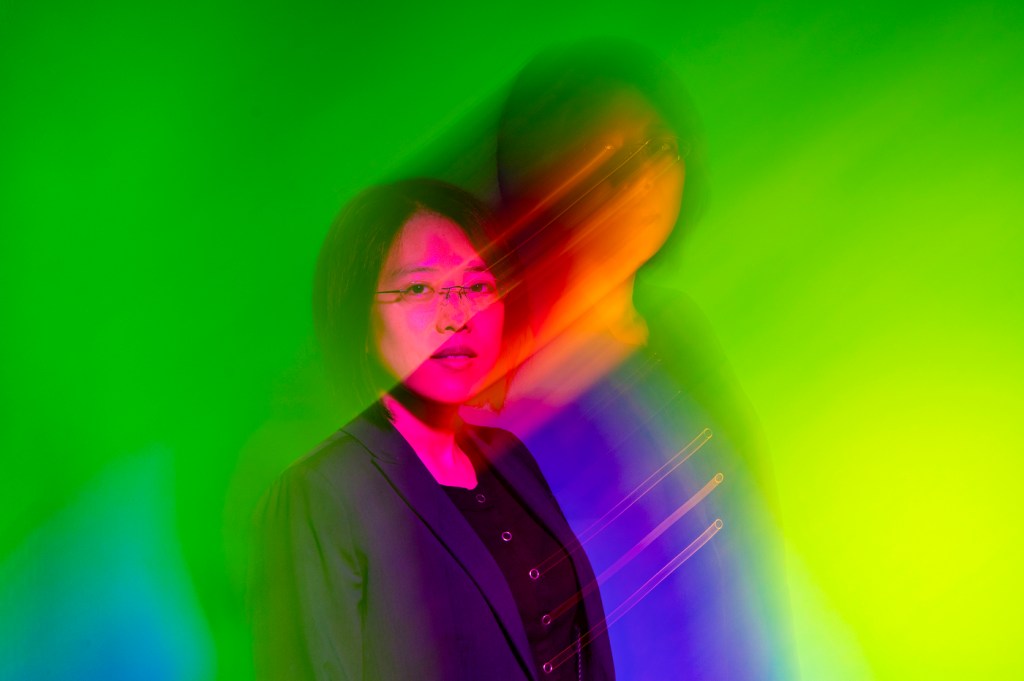Computational chemistry promises to upset traditional methods of chemical synthesis
Sijia Dong, assistant professor in chemistry and chemical biology, has received an NIH MIRA grant, supporting revolutionary protein design strategies for drug synthesis.

The process of discovering and designing new chemicals has always been arduous — Sijia Dong wants to change that.
As an assistant professor in the department of chemistry and chemical biology, with affiliations in physics and chemical engineering, Dong uses “physics-based simulations, AI and quantum computing” to accelerate chemical discovery.
When we think of chemistry, we may think of liquids in test tubes and under microscopes, but chemicals, too, are composed of subatomic particles like electrons and protons, a fact that Dong and her research team take advantage of in their study of enzymes — proteins that help one chemical transform into another.
Photochemistry, Dong says, is the study of how chemicals change in response to photons — light. With new research, published in Chem, Dong and her collaborators use photochemistry to enable novel enzymatic synthesis through a physical process called charge transfer.
This allows them to engineer unique, light-driven “photoenzymes for large-scale, energy-efficient chemical synthesis,” she says.
Featured Posts
“These charge transfers actually happen on electronic excited states,” Dong says, meaning that the electrons of the molecule are at higher energy levels. Incorporating these “excited states into the enzyme design strategy” is “something that hasn’t been explored much before.”
“We found through computational studies that by engineering the protein we can actually modulate or control the electronic structure of these charge transfer complexes,” and thus control the reaction.
When it comes to light-driven chemistry, pharmaceutical companies, she continues, are always interested in new synthesis methods “because it could potentially become an energy-efficient and low-cost way to make drugs.”
With a new grant from the National Institutes of Health, the Maximizing Investigators’ Research Award (MIRA) for Early Stage Investigators will support Dong’s ongoing work, which “focuses on developing a computational framework for the mechanistic studies, prediction and design of photoenzymes,” she says.
This computational framework, she says, “will provide a new approach to catalyst design and could potentially revolutionize chemical discovery,” she wrote in a follow-up.
“There are things that you can’t measure experimentally — or cannot be cheaply done experimentally,” she says, including the mechanism behind many reactions and the “high-throughput screening of” mutations in a protein.
Current engineering methods often rely on what’s known as directed evolution, where scientists “are randomly mutating the protein and then seeing what happens,” Dong says, picking the mutations that are closest to their goal for a particular chemical, and then repeating this iterative process.
Dong sees an alternative, to do “inverse design with machine learning.” Instead of starting with one protein and haphazardly directing its evolution — through scattershot, random mutations — “if we know what kind of functionality we want,” Dong says, they can leverage “both machine learning and first-principles simulations to basically predict what protein sequence can achieve that” functionality.
Artificial intelligence and new simulation methods will also help researchers “predict what properties enzymes might have given certain mutations,” as opposed to running through the entire costly evolution process.
The directed evolution of enzymes, while it was revolutionary in its own time, “can be very costly,” Dong says, and “you are not guaranteed to find what you want to find.”
With Dong’s physics-based framework, “you are more likely to find a protein variant you want, [in a] shorter amount of time with less money.”
The 2024 Nobel Prize in Chemistry was partly awarded to a pioneer in the field of computational protein design. “We are on an emerging front of the field,” Dong wrote, “developing a computational framework for designing proteins that can enable light-driven chemistry.”
“We’re really grateful,” Dong says, looking forward to the MIRA grant, which will help support this radical new computational strategy.











